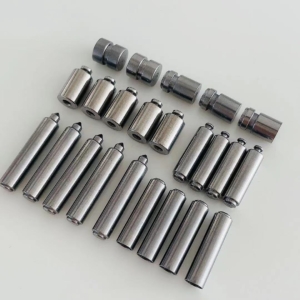best way to sand stainless steel
Stainless steel is an excellent material that is widely used in food, medical, machinery and other fields because of its durability, strength and aesthetics. However, over time, its surface may develop oxidation, scratches, and blemishes that affect its appearance. How to restore stainless steel to its original luster or make it look brand new? Below we bring some simple methods for grinding and polishing stainless steel.

1. Choose the right sandpaper
The first step in sanding stainless steel is choosing the right sandpaper. For minor scratches and blemishes, 240 to 320 grit fine sandpaper is recommended. For deeper scratches and blemishes, a coarse-grit sandpaper between 120 and 180 grit may be more appropriate.
It is also important to use sandpaper designed specifically for stainless steel to prevent contamination and ensure a consistent finish. Silicon carbide sandpaper is a popular choice for stainless steel due to its durability and smooth surface.
2. Prepare the surface
Before polishing stainless steel, the surface must be thoroughly cleaned. Use a degreaser or alcohol-based cleaner to remove surface dirt, oil, or debris. This will ensure that the sandpaper is effective at removing scratches and blemishes.
If the stainless steel surface is particularly dirty or greasy, you may need to use a stainless steel cleaner or polish to restore it to its original luster before polishing.
3. Polishing technology
When sanding stainless steel, it is important to use consistent and even pressure to avoid creating an uneven surface or further damage. Start by sanding in the direction of the grain to get an even finish.
Move the sandpaper in a circular motion, overlapping slightly each time you sand to ensure complete coverage. Check the surface regularly to monitor progress and adjust pressure as needed to achieve the desired smoothness.
For deeper scratches and blemishes, you may need to switch to coarser-grit sandpaper to effectively remove them. Repeat the sanding process using gradually finer sandpaper until the surface is smooth and polished to your satisfaction.
4. Polished surface
After stainless steel is ground, the surface must be polished to restore the luster. Use stainless steel polish or metal polish to polish the surface in a circular motion, following the grain of the stainless steel.
You can also use a buffing wheel or polish to achieve a high gloss quickly and efficiently. Before polishing, make sure the stainless steel surface is clean and dry for best results.
5. Finishing work
After sanding and polishing your stainless steel surface, you may want to apply a protective coating to prevent future scratches and preserve its appearance. Stainless steel sealant or varnish can provide an extra layer of protection against corrosion and staining.
Regular maintenance and cleaning will also help keep your stainless steel looking its best. Regularly use a mild detergent or stainless steel cleaner to remove dirt and grime, and avoid using abrasive cleaners that can damage the surface.
In summary, sanding stainless steel is an effective way to restore its finish and remove scratches and imperfections. By choosing the right sandpaper, properly preparing the surface, using the correct sanding techniques, polishing the surface, and applying a protective coating, you can achieve a smooth, polished surface that enhances the appearance of stainless steel. With proper care and maintenance, your stainless steel will continue to shine for years to come.

Leave a Reply
Want to join the discussion?Feel free to contribute!